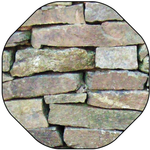- Home
- InDesign
- Discussions
- Re: checking soft proof pdf for oversaturation
- Re: checking soft proof pdf for oversaturation
Copy link to clipboard
Copied
I am using InDesign to create a book of photographs (color and B&W) and text. I will be having this book printed by a professional offset printing company. I will be submitting the file to the printer as a press quality pdf. (As an aside, I converted all of my images to Adobe RGB (1998) before putting them in layout, and I am aware that the entire file will be converted to CMYK for offset printing.)
I would like to know:
1. Is it possible to soft proof my pdf for oversaturation before I send it to the printer? (assuming I know what the printing company's desired destination space/color profile is - in this case, U.S. Web Coated SWOP v2)
2. If it is possible, how do I go about doing it? (I assume I am exporting my file as a pdf using the destination space/color profile the printer requested, but what then?)
3. What pdf export settings should I use on the 'output' panel of InDesign's Export Adobe PDF? (aside from 'Destination: Document CMYK - U.S. Web Coated SWOP v2' as mentioned above)
I am working on an iMac desktop. Thanks in advance for any insight!
 2 Correct answers
2 Correct answers
I know that things can look very different (usually much darker) printed on paper,
If your monitor profile is an accurate profile of your display and the Destination CMYK profile is accurate for the press conditions your soft proof should be reasonably accurate. If the prints are coming back excesssively dark then it’s likely the wrong CMYK destination profile was used.
You can see the effect of the document’s assigned CMYK profile in the Separation Preview’s output numbers. Here the image
...Regarding the black and white images, if they are printing as true grayscales they sghould not be a problem. You only get too much ink with rich (CMYK) blacks.
Copy link to clipboard
Copied
Yes, that is the purpose of Window > Output > Separations Preview
I am alarmed that a book printing company wants you to use U.S. Web Coated SWOP v2. Are you sure? Are they operating on old knowledge?
I would start with an export joboption like PDF-X/4 and maybe modify it with your correct destination colorspace. Nowadays that is more likely to be something like a FOGRA or especially a GRACOL. I would double-check that with someone knowledgable at your commercial printery.
Adobe Acrobat Pro also has a similar tool inside it for preflight/prepress stuff. Look for Acrobat > Tools > Print Production > Output Preview. Make sure you require a color proof and that you are there for the press run if at all possible.
Copy link to clipboard
Copied
I'm thinking that by oversaturation you mean more ink than the paper can absorb (the ink limit). You can check for too much ink in the shadow areas (the only place it will occur) in the Separations Preview panel by choosing Ink Limit and set it for the appropriate value. I believe SWOP has a 300% limit in the defintion, but you should check with the printer to see what they recommend. You should assign the correct CMYK profile in the document using Edit > Assign Profiles... before checking.
Ask the printer if they have a PDF .joboptions file you can download, or if not what settings they want you to use.
Copy link to clipboard
Copied
In Acrobat, go to Tools> Print Production> Output Preview.
Let your printer worry about ink coverage, as this may be specific to printing conditions.
Copy link to clipboard
Copied
Hi @Jonathan28895428q83g , Could you clarify whether you are referring to total ink limits or out-of-gamut color?
InDesign’s Overprint/Separation Preview is the equivalent of Photoshop’s default Proof Colors, which with an RGB image uses the current Color Settings’ Working CMYK profile for the soft proof. InDesign documents have RGB and CMYK profile assignments, so its Separation/Overprint Preview uses the document’s assigned CMYK profile for the soft proof.
An AdobeRGB Photoshop image with out-of-gamut color previewed as RGB
Same file with Proof Colors turned on—the default Proof Color Setup is Working CMYK, US Web Coated SWOP in this case:
In InDesign with Overprint/Separation Preview turned off, the image soft proofs as AdobeRGB—its embedded profile:
With Overprint/Separation Preview turned on, the soft proof and output numbers are to Document CMYK, US Web Coated (SWOP) in this example:
Copy link to clipboard
Copied
Thanks for your very informative responses, everyone. I should have been a little clearer in my original post: I have not yet chosen a printing company, so the destination CMYK profile is not actually US SWOP - I was just using that as an example.
I know that the output will look slightly different depending on which profile the printing company uses. And I realize that ultimately the printing company can prevent oversaturation by limiting the amount of ink to a given value (such as 300%).
However, there are a lot of photos in the book (including a lot of black in the B&W images, and a lot of dark colors in the color images). I know that things can look very different (usually much darker) printed on paper, as compared to how they appear on a computer screen in RGB. I want to make sure that the finished product is as close to what I want as possible. So I'd rather weed out any potential problems (such as loss of detail in the more shadowy parts of photos) by adjusting files before we get to the prepress stage - especially since I may not be able to be there for printing.
Copy link to clipboard
Copied
I know that things can look very different (usually much darker) printed on paper,
If your monitor profile is an accurate profile of your display and the Destination CMYK profile is accurate for the press conditions your soft proof should be reasonably accurate. If the prints are coming back excesssively dark then it’s likely the wrong CMYK destination profile was used.
You can see the effect of the document’s assigned CMYK profile in the Separation Preview’s output numbers. Here the image has AdobeRGB assigned and the neutral gray band at the bottom has different output CMYK values depending on the document’s CMYK assignment. With US Web Coated SWOP the gray’s total ink is 145, and with US Sheetfed, which allows for more dot gain, it is 127. If you made a conversion to SWOP, but the press was running to US Sheetfed, the print would be darker because of the wrong destination profile:
US SWOP
US Sheetfed
The total ink allowance is also handled by the RGB to CMYK conversion, so if you are expecting the printer to control the total ink, you might consider delivering a PDF with the profiled RGB images and let them make the conversion.
US Sheetfed allows 350% compared to SWOP’s 300%:
Copy link to clipboard
Copied
Regarding the black and white images, if they are printing as true grayscales they sghould not be a problem. You only get too much ink with rich (CMYK) blacks.
Find more inspiration, events, and resources on the new Adobe Community
Explore Now









